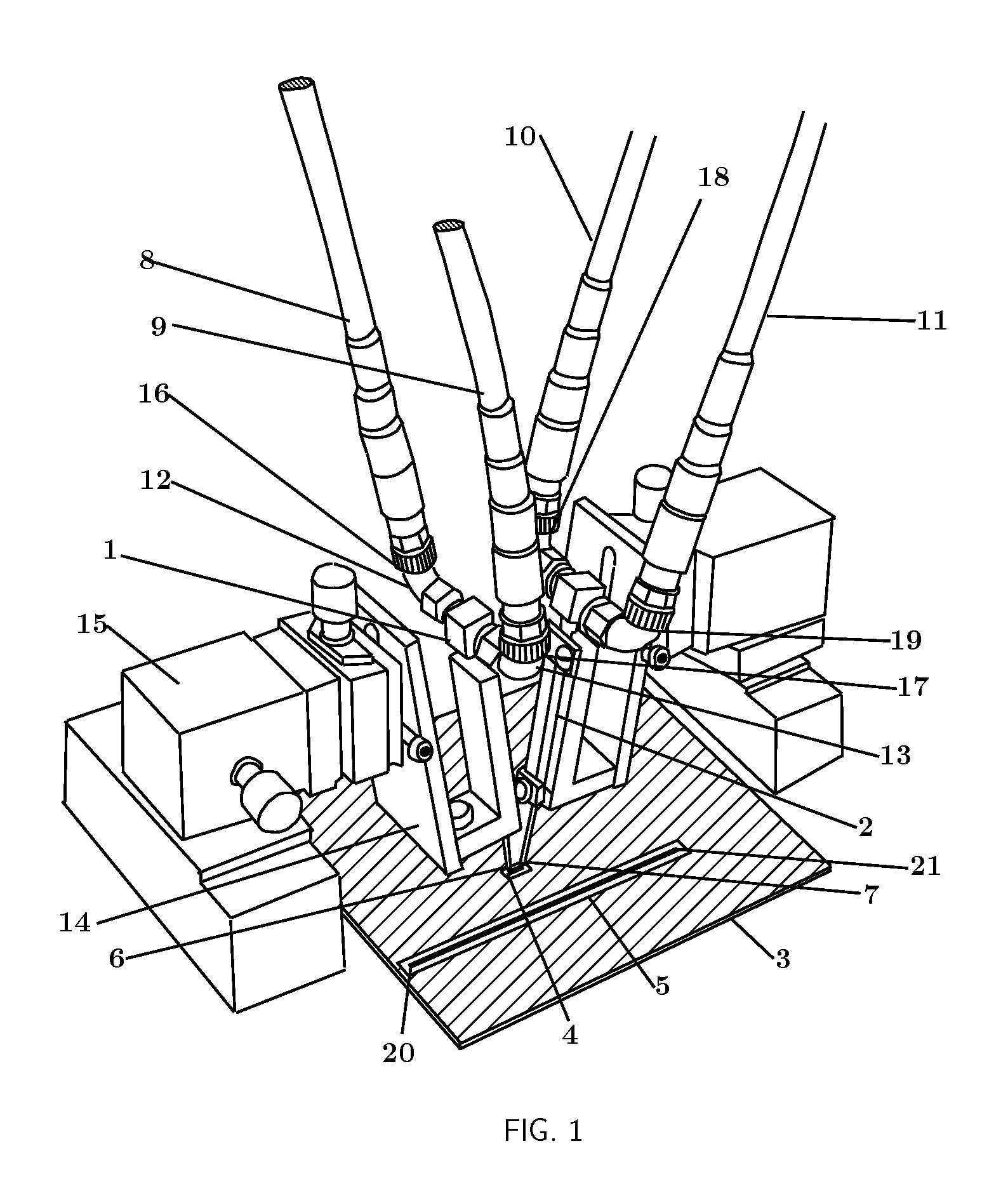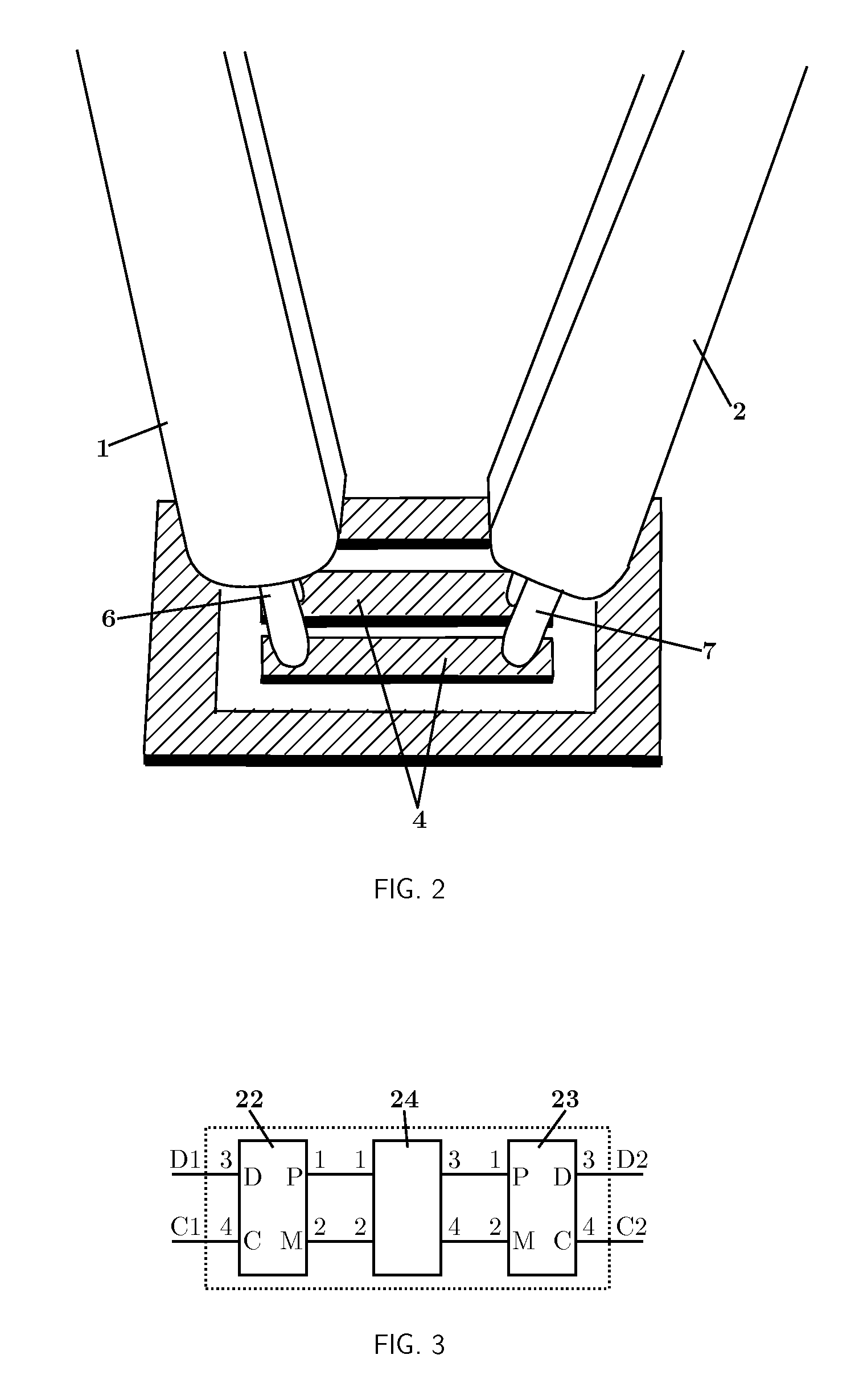Method for de-embedding in network analysis
a network analysis and network analysis technology, applied in the direction of measuring devices, resistance/reactance/impedence, instruments, etc., can solve the problems of presenting unwanted errors in measurement, methods beyond even their general complexity, and most complex and varied calibration methods, so as to achieve less error-prone, less complicated and easy
- Summary
- Abstract
- Description
- Claims
- Application Information
AI Technical Summary
Benefits of technology
Problems solved by technology
Method used
Image
Examples
Embodiment Construction
[0044]FIG. 1 shows an exemplary measurement arrangement in accordance with one or more embodiments of the invention. In this arrangement, a first probe [1] and a second probe [2] are shown probing a PCB trace. In this case the PCB [3] preferably contains two sets of traces; a 100 mil thru [4] and a three inch differential line [5]. FIG. 1 shows the probes [1] and [2] probing the 100 mil thru [4]. The probe tips, [6] and [7] are shown in detail probing the 100 mil thru [4] in FIG. 2. Considering probe 1 [1] (the arrangement for probe 2 [2] is similar), one sees cables [8] and [9] connected to right angle SMA adaptors [12] and [13] connected to the probe [1]. The probe [1] is held in a probe holder [14] which is positioned using a probe positioner [15]. In this particular case, the measurement is calibrated to the measurement reference planes [16], [17], [18] and [19] which are coaxial planes at the ends of the cables [8], [9], [10] and [11] respectively. The cables themselves are con...
PUM
 Login to View More
Login to View More Abstract
Description
Claims
Application Information
 Login to View More
Login to View More - R&D
- Intellectual Property
- Life Sciences
- Materials
- Tech Scout
- Unparalleled Data Quality
- Higher Quality Content
- 60% Fewer Hallucinations
Browse by: Latest US Patents, China's latest patents, Technical Efficacy Thesaurus, Application Domain, Technology Topic, Popular Technical Reports.
© 2025 PatSnap. All rights reserved.Legal|Privacy policy|Modern Slavery Act Transparency Statement|Sitemap|About US| Contact US: help@patsnap.com



